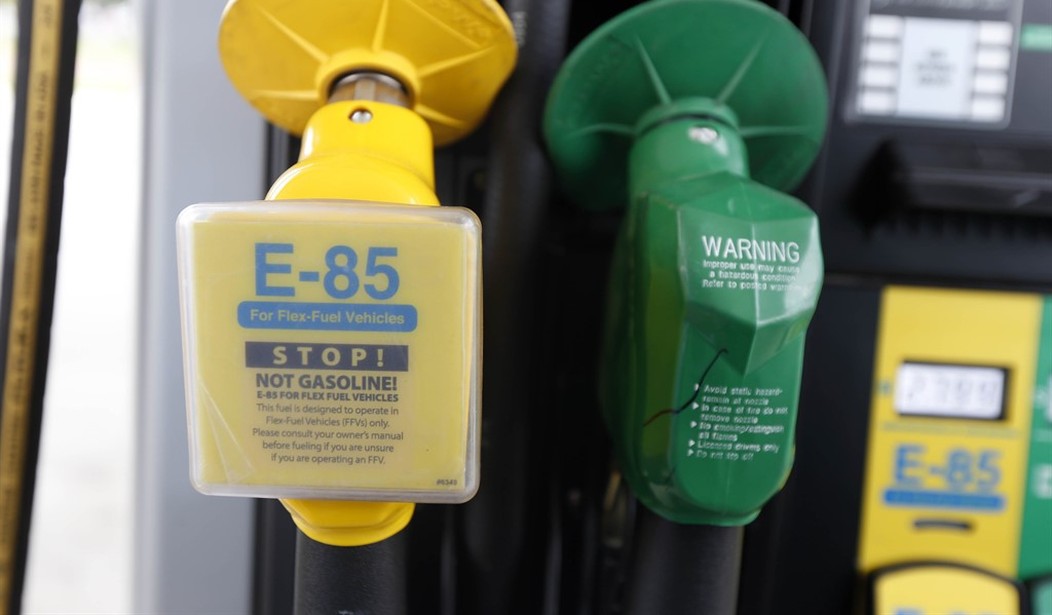Even as Joe Biden continues to try to blame high gas prices on Vladimir Putin (a claim that not even the mainstream media is swallowing), the White House is still scrambling to find something they can do to lower gas prices ahead of the midterms. Or at least that’s what the Biden administration is claiming to be doing, though there are obviously some less pristine motives behind this week’s announcement that Biden will wave restrictions on higher ethanol content in gasoline this summer. There were very good reasons that those restrictions have been in place, but even if this move only cuts the price of gas by ten cents (and only in certain markets, not across the entire country), the Democrats clearly see a potential opportunity to run up some political points in the process. (Associated Press)
President Joe Biden is visiting corn-rich Iowa on Tuesday to announce he’ll suspend a federal rule preventing the sale of higher ethanol blend gasoline this summer as his administration tries to tamp down prices at the pump that have spiked during Russia’s war with Ukraine.
Most gasoline sold in the U.S. is blended with 10% ethanol. The Environmental Protection Agency will issue an emergency waiver to allow widespread sale of 15% ethanol blend that is usually prohibited between June 1 and Sept. 15 because of concerns that it adds to smog in high temperatures.
Senior Biden administration officials said the move will save drivers an average of 10 cents per gallon at 2,300 gas stations. Industry groups say most of those stations are in the Midwest and the South, including Texas.
This story ties into the controversy over the Renewable Fuel Standard, which we’ve been covering here for years. The government mandates that oil refineries blend a certain percentage of ethanol into gasoline or pay a penalty (in the form of “RIN credits”) for failing to do so. This is supposedly being done to encourage the use of “green energy” by reducing the amount of oil that’s used.
In reality, ethanol is actually a substandard fuel that produces less energy by volume than actual gasoline. And the agricultural processes used to produce it cause detrimental environmental effects of their own. But most ethanol is still made from corn, which makes it very important to the corn farmers in Iowa, a politically influential state. (You’ll note that Biden made the announcement during a visit to Iowa, but I’m sure that’s just a coincidence, right?)
Up until now, the ethanol blending, which goes as high as 15%, was not allowed to exceed 10% during the summer months. That provision was included in the rules because one of the bad things about ethanol (among many) is that the exhaust fumes it produces from your car’s tailpipe can lead to higher levels of smog when temperatures are higher. Also, anyone with a boat engine or a gas-powered lawnmower can tell you that higher ethanol levels lead to the fouling of those types of engines. This forces boaters to either pay more for ethanol-free gas or purchase ethanol “cleansers” to mix with their fuel.
On top of all that, as noted in the excerpt above, this change will only impact prices in certain areas where more E-15 gas is shipped. That will be primarily in the midwest and the south. So this reckless rule change won’t really impact prices in California, for example, where they have the highest gas prices in the country.
This order will do almost nothing to significantly impact gas prices. It was a politically calculated move intended to score points with the green energy progressives in Biden’s base and the voters in Iowa. (Who didn’t even back Biden in 2020.) Given recent trends in polling, however, I doubt this will impress American voters very much. They know how much it costs to fill up their tanks and a minor tweak to the Renewable Fuel Standard isn’t going to change the hit they’re taking to their paychecks.







Join the conversation as a VIP Member